#Western Wei dynasty
Text





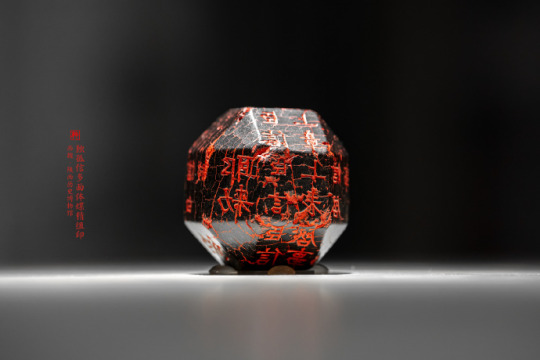
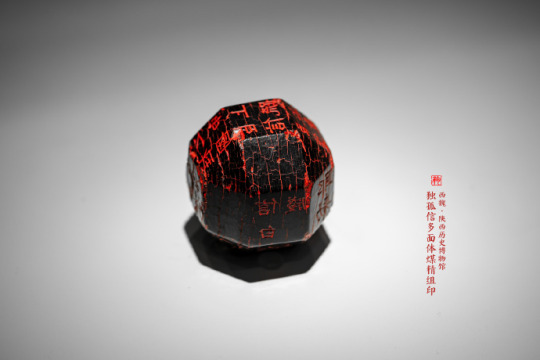

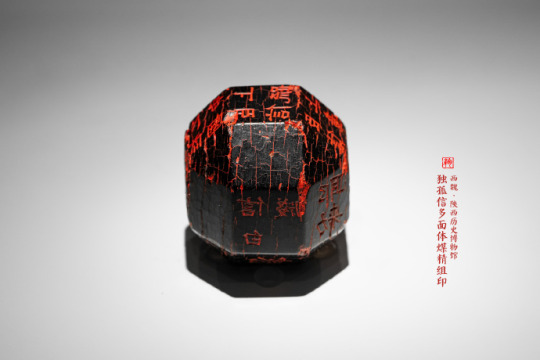
Jet-black Polyhedral Seal of The Western Wei General
This multi-faceted jet seal of the Western Wei dynasty, belonged to the famous General Dugu Xin (獨孤信). It has 8 edges and 26 sides: 18 square and 8 triangular ones. It is the ancient polyhedral seal with the largest number of facets.
Among them, 14 sides are engraved with inscriptions. The inscriptions range from one-character to five-character. The functionality is differentiated, including the use in official letters, orders, document labeling, etc.
The jet, a composite organic gem, from which the seal is carved, is known in China as “coal jade” (煤玉).
The total height of the object is 4.5 cm, the width is 4.35 cm, and the weight is 75.7 g.
The seal was accidentally discovered in 1981 by Song Qing, a student from Xunyang county (旬陽縣), Ankang, Shaanxi. While returning home from school, he picked up a weird object in the gravel on the roadside, which aroused his curiosity with its bizarre shape. Song Qing had no idea what it was. Having examined the inscriptions at home, he gave the find for examination to the local archaeological museum, where the artifact was considered not of particular cultural value.
The seal vegetated on the outskirts of the local exposition for another decade, until it was revealed and recognized by a prominent researcher Wang Hanzhang (王翰章) from the Xi'an Institute of Literature and History. On display in Shaanxi History Museum (陝西曆史博物館).
#ancient china#chinese culture#chinese history#chinese seals#seal#seals#calligraphy#lettering#chinese calligraphy#jet#carving#stone carving#gemstone#gems#gemstones#lignite#jet-black#Western Wei dynasty
275 notes
·
View notes
Text
Advisors Alliance Mini Encyclopedia Translation Post 19: Dogwood
The Advisors Alliance 大军师司马懿之军师联盟 is a 2017 two-part Chinese TV series depicting the life of Sima Yi, a government official and military strategist who lived during the late Eastern Han Dynasty 东汉 (25 CE - 220 CE) and the Three Kingdoms Period 三国時代 (220 CE - 280 CE). [Wikipedia of the show’s first season]
The second part is titled Growling Tiger Roaring Dragon 虎啸龙吟 and keeps following Sima Yi’s life as he matures and becomes wiser [Link to the show’s second season’s MyDramaList page].
The Weibo account [Link] of the show made a series of posts in the style of small encyclopedias explaining different historical and cultural facts that where included in the series. The user @moononmyfloor compiled the 50 posts and asked me to translate them. This will be an ongoing series where I will do just that. Although I tried to stay as close as possible to the original text, I had to take some liberties in some posts to get the meaning across better. On the side, I have included extra information from personal research that explains certain things better.
The posts are not in order of the episodes but I will provide the episode and season number to avoid confusion. If there are any mistakes in translation, do let me know in the comments or privately message me and I will do my best to fix them.
If it is difficult to read the letters, tap or click on the image to expand it. Without more preamble, here you go.


There’s a typo. I meant “Ming Dynasty” not “Mind Dynasty”.
Extra information:
Double Ninth Festival, also known as Double Yang Festival and Chongyang Festival, is a Chinese holiday celebrated on the ninth day of the ninth month in the traditional Chinese calendar. It’s called the Double Yang Festival 重阳节 [Trad. 重陽節] because nine, in Chinese culture, was regarded to be a Yang number (6 was Yin). As such, the ninth day of the nine month was considered to have very strong Yang energy and, thus, was auspicious. People celebrated it by climbing high places such as mountains (from there the festival also came to be known as the Height Ascending Festival 登高节), drinking chrysanthemum wine, eating chrysanthemum cakes, appreciating chrysanthemum flowers, wearing dogwood branches on the hair, and visiting the graves of ancestors to leave food, drinks, and gifts. The tradition of climbing mountains likely came from the worship of mountains as ancient Chinese people climbed them to pray and receive blessings from the gods and/or ancestors. The Double Ninth Festival predates the Eastern Han Dynasty.
Like all other traditional Chinese holidays, poets wrote poems dedicated to celebrating the auspicious days. The fragment of the poem that is mentioned at the beginning of the post is one taught to children in China in elementary school. It’s by the Tang poet Wang Wei 王维 and it’s titled 《九月九日忆山东兄弟》 [Trad. 《九月九日憶山東兄弟》]. Below is the poem in both simplified and traditional Chinese. I will leave a translation made by American Poet Witter Bynner below.
Traditional:
獨在異鄉為異客,
每逢佳節倍思親。
遙知兄弟登高處,
遍插茱萸少一人。
Simplified:
独在异乡为异客,
每逢佳节倍思亲。
遥知兄弟登高处,
遍插茱萸少一人。
Translation (On the Mountain Holiday Thinking of my Brothers in Shandong)
All alone in a foreign land,
I am twice as homesick on this day.
When brothers carry dogwood up the mountain,
Each of them a branch -- and my branch missing.
The three sacrificial animals 三牲 changed depending on the dynasty. For instance, nowadays, people associate the three sacrificial animals with chicken, pork, and fish. However, in the time of the Western Zhou Dynasty, people referred to the three sacrificial animals as cow, sheep, and pig. Variations also include chicken, duck (or geese), and fish. Another variation involves five animals instead of three: chicken, duck, pork, fish, and squid. The purpose of animal sacrifice was to ask the gods and ancestors for protection and/or blessings.

Picture showcasing the five animal sacrifices 五牲 of chicken, pork, fish, duck, and squid [image source].
Catalogue (find the rest of the posts):
#chinese culture#chinese history#the advisors alliance#history#food history#food#dogwood#double yang festival#eastern han dynasty#western zhou dynasty#three kingdoms#wang wei#chinese poetry
65 notes
·
View notes
Text
Imperial Chinese Harem Systems part 3
Western Han
Empress (皇后 ; huáng hòu)
Lady of Bright Deportment (昭儀; zhāo yí)
Lady of Handsome Fairness (婕妤; jié yú), created by Emperor Wu
Lady of Graceful Beauty (娙娥; xíng é), created by Emperor Wu
Lady of Lovely Countenance (容華; róng huá), created by Emperor Wu
Lady of Complete Deportment (充衣; chōng yī), created by Emperor Wu
Beauty (美人; měi rén)
Virtuous Lady (良人; liáng rén)
Consort (八子; bā zi)
Lady (七子; qī zi)
Senior Palace Woman (長使; zhǎng shǐ)
Junior Palace Woman (少使; shǎo shǐ)
Lady for Miscellaneous Uses (五官; wǔ guān)
Lady of Complaisant Constancy (順常; shùn cháng)
Lady Without Impurity (舞涓; wǔ juān), Lady of Reverent Gentleness (共和; gòng hé), Lady who Pleases the Spirit (娛靈; yú líng), Lady who Could Comfort a Multitude (保林; bǎo lín), Lady of Excellent Employment (良使; liáng shǐ), Lady for Night Attendance (夜者; yè zhě)
The principal wife of the Crown Prince was called (妃; fēi). There also exists a sub-ranking system for concubines; they were called Ladies of Excellence (良娣; liáng dì) and (孺人; rú rén). For grandchildren of the Emperor, their principal wives were called Madame (夫人; fū rén). Concubines for these people have no titles, and were simple called (家人子; jiā rén zǐ).
Eastern Han
Empress (皇后; huáng hòu)
Noble Lady (貴人; guì rén)
Beauty (美人; měi rén)
Courtier (宮人; gōng rén)
Talented Lady (才女; cǎi nǚ
No limits were set for these consorts. This later created situations when more than 20,000 women were living in the palace during the reigns of Emperor Huan and Emperor Ling.
Three Kingdoms
Cao Wei
During the reign of Cao Cao (who was not an emperor but a king):
Queen (王后; wáng hòu)
Madame (夫人; fū rén)
Lady of Bright Deportment (昭儀; zhāo yí)
Lady of Handsome Fairness (婕妤; jié yú)
Lady of Lovely Countenance (容華; róng huá)
Beauty (美人; měi rén)
During the reign of Emperor Wen:
Empress (皇后; huáng hòu)
Madame (夫人; fū rén)
Noble Imperial Concubines (貴嬪; guì pín)
Lady of Pure Beauty (淑媛; shū yuàn)
Lady of Bright Deportment (昭儀; zhāo yí)
Lady of Cultivated Countenance (修容; xiū róng)
Lady of Handsome Fairness (婕妤; jié yú)
Lady of Lovely Countenance (容華; róng huá)
Lady of Humble Capability (順成; shùn chéng)
Beauty (美人; měi rén)
Virtuous Lady (良人; liáng rén)
During the reign of Emperor Ming:
Empress (皇后; huáng hòu)
Madame (夫人; fū rén)
Noble Imperial Concubines (貴嬪; guì pín)
Pure Consort (淑妃; shū fēi)
Lady of Pure Beauty (淑媛; shū yuàn)
Lady of Bright Deportment (昭儀; zhāo yí)
Lady of Bright Magnificence (昭華; zhāo huá)
Lady of Cultivated Countenance (修容; xiū róng)
Lady of Cultivated Deportment (修儀; xiū yí)
Lady of Handsome Fairness (婕妤; jié yú)
Lady of Lovely Countenance (傛華; rǒng huá)
Beauty (美人; měi rén)
Virtuous Lady (良人; liáng rén)
Northern & Southern Dynasties
Liu Song
1 Empress (皇后; huáng hòu)
3 Madames (夫人; fū rén) Noble Imperial Concubines (貴嬪; guì pín), Consort (夫人; fū rén), and Noble Lady (貴人; guì rén)
9 Imperial Concubines (嬪; pín) Pure Consort (淑妃; shū fēi), Lady of Pure Beauty (淑媛; shū yuàn), Lady of Warm Ceremony (淑儀; shū yí), Lady of Cultivated Splendidness (修華; xiū huá), Lady of Cultivated Countenance (修容; xiū róng), Lady of Cultivated Deportment (修儀; xiū yí), Lady of Handsome Fairness (婕妤; jié yú), Lady of Everlasting Splendidness (傛華; yǒng huá), and Lady of Sufficient Splendidness (充華; chōng huá)
Beauty (美人; měi rén)
From 456, during the reign of Emperor Xiaowu:
1 Empress (皇后; huáng hòu)
3 Madames (夫人; fū rén) Noble Consort (貴妃; guì fēi), Noble Imperial Concubines (貴嬪; guì pín), and Noble Lady (貴人; guì rén)
9 Imperial Concubines (嬪; pín) Pure Consort (淑妃; shū fēi), Lady of Pure Beauty (淑媛; shū yuàn), Lady of Warm Ceremony (淑儀; shū yí), Lady of Bright Deportment (昭儀; zhāo yí), Lady of Bright Countenance (昭容; zhāo róng), Lady of Bright Splendidness (昭華; zhāo huá), Lady of Handsome Fairness (婕妤; jié yú), Lady of Lovely Countenance (容華; róng huá), and Lady of Sufficient Splendidness (充華; chōng huá)
Beauty (美人; měi rén)
Lady of Regular Talents (中才人; zhōng cái rén)
Lady of Complete Deportment (充衣; chōng yī)
From the reign of Emperor Ming:
1 Empress (皇后; huáng hòu)
3 Madames (夫人; fū rén) Noble Consort (貴妃; guì fēi), Noble Imperial Concubines (貴嬪; guì pín), and Noble Concubine (貴姬; guì jī)
9 Imperial Concubines (嬪; pín) Lady of Pure Beauty (淑媛; shū yuàn), Lady of Pure Deportment (淑儀; shū yí), Lady of Pure Countenance (淑容; shū róng), Lady of Bright Splendidness (昭華; zhāo huá), Lady of Bright Deportment (昭儀; zhāo yí), Lady of Bright Countenance (昭容; zhāo róng), Lady of Cultivated Splendidness (修華; xiū huá), Lady of Cultivated Deportment (修儀; xiū yí), and Lady of Cultivated Countenance (修容; xiū róng)
5 (職; zhí)
Handsome Fairness (婕妤; jié yú)
Lady of Lovely Countenance (容華; róng huá)
Lady of Sufficient Countenance (充華; chōng huá)
Lady of Inherit Honor (承徽; chéng huī)
Lady of Kind Honor (列榮; liè róng)
Beauty (美人; měi rén)
Lady of Regular Talents (中才人; zhōng cái rén)
Lady of Talents (才人; cái rén)
Lady of Virtue (良人; liáng rén)
Lady of Complete Deportment (充衣; chōng yī)) Handsome Fairness (婕妤; jié yú)Lady of Lovely Countenance (容華; róng huá), Lady of Sufficient Countenance (充華; chōng huá), Lady of Inherit Honor (承徽; chéng huī), and Lady of Kind Honor (列榮; liè róng)
Beauty (美人; měi rén)
Lady of Regular Talents (中才人; zhōng cái rén)
Lady of Talents (才人; cái rén)
Lady of Virtue (良人; liáng rén)
Lady of Complete Deportment (充衣; chōng yī)
#historical chinese harem system#western han#eastern han#three kingdoms#cao wei#northern and southern dynasties#liu song
37 notes
·
View notes
Text
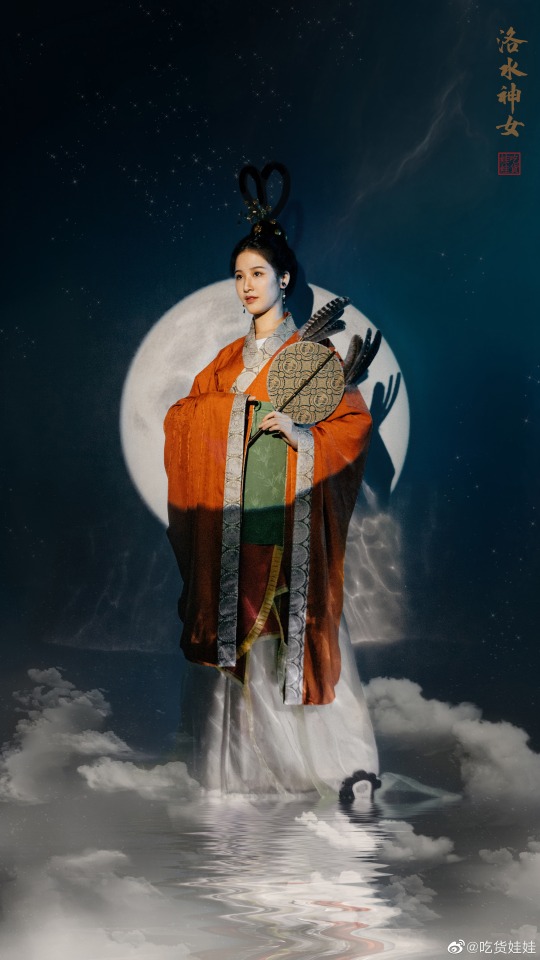








【Historical Reference Artifacts】:
China Eastern Jin Dynasty Silk Painting:《The Goddess of the River Luo /洛神赋图》BY 顾恺之(Song Dynasty copy ver.)
China Western Wei & Northern Wei Dunhuang Murals and Lacquer Paintings
China Southern Dynasties Portrait Bricks


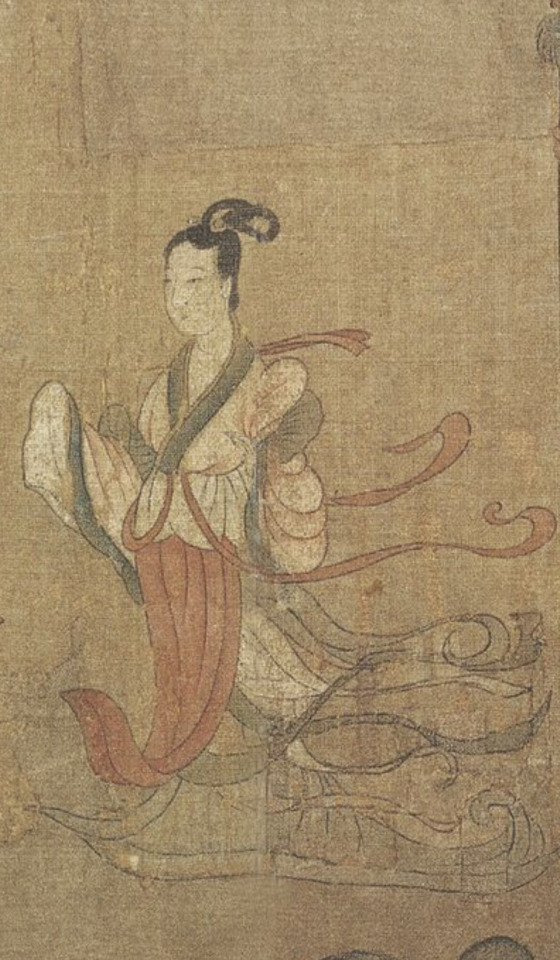
[Hanfu・漢服]Chinese Jin Dynasty-Northern and Southern Dynasties Traditional Clothing Hanfu & Hairstyle
--------------
Gu Kaizhi(顾恺之)'s work "The Goddess of the River Luo / Luoshen Fu Tu" in the Eastern Jin Dynasty had a profound influence on people's impression of gods in all subsequent Chinese dynasties.Although the original painting has been lost, there are many copied ver in various dynasties China.
Wu Daozi, who is known as the "painting fairy",his works about godness can also be seen to be deeply influenced by the Wei, Jin, Southern and Northern Dynasties.

Eighty seven celestial people, Wu Daozi,Tang Dynasty
Therefore, we can often see Chinese gods (except Buddhist Bodhisattvas) wearing attire in the style of the Wei, Jin, Southern and Northern Dynasties.
��———————
📸Recreation Work: @吃货娃娃
🔗Weibo:https://weibo.com/1868003212/M36MNh5wL
————————
#chinese hanfu#Jin Dynasty-Northern and Southern Dynasties#hanfu#hanfu accessories#hanfu_challenge#chinese traditional clothing#china#chinese#chinese art history#historical fashion#historical costuming#吃货娃娃#漢服#汉服#中華風#chinese style
267 notes
·
View notes
Note
not sure if you've answered this before but would you happen to know if lgbt+ is common in 'ancient china'? if it was when did it stop being 'common'? i just ask this because i heard of the story about the emperor (? i think) who cut off his sleeve for his lover
The story you're referring to is often called "the Passion of the Cut Sleeve", a story recorded in 汉书 (A History of the Former Han, about Emperor Ai, Liu Xin, of the Han dynasty (who ruled from 7 BC - 1 BC and died at 25 y.o, for perspective) and his lover, Dong Xian. To put it shortly, in order to not wake Dong Xian from sleep, Emperor Ai cut off a sleeve of his robe so that he could get up without disturbing him. "Cut sleeve"/etc (断袖/断袖之癖/断袖之宠) thus eventually because a euphemism for homosexuality. Similar euphemisms came from other, older stories involving monarchs:
"The Story of the Shared Peach"/"The Bitten Peach" led to "shared peach" (分桃) and "bitten peach" (餘桃) becoming a slang for "homosexual". This story is actually often posed as a fable of sorts. Mizi Xia was a courtier of Duke Ling of Wei (not to be confused with the later state of Wei) (ruled 534 — 492 BC) who was very good-looking and once shared a peach with the duke, who was charmed by the gesture and allowed Mizi Xia to use his carriage without having to ask permission. Later, when Mizi Xia's looks had faded, he lost favor with Ling-gong, who then said that Mizi Xia had stolen his carriage and insulted him by giving him a half-eaten peach. Still, Mizi Xia as a legendary figure is often referenced as the ideal lover.
A third story is just that of King Wei and Lord Longyang, which would've taken place somewhere around 260ish BC (give or take a decade). It was recorded briefly that once when the two were out fishing, Longyang began to cry, and when asked why, he said that he was afraid that when he lost his looks, the king, being surrounded by so many beauties, would eventually abandon him. As a result, in order to show Longyang that this was not the case, the king handed down the order that it would be forbidden to discus any other beauties, and punishment for doing so would be death to the entire family and confiscation of property (I know, extra). Later, Longyang was given a fiefdom by the king and "Lord Longyang" (龙阳君) is a slang for homosexual, with "the closeness of Longyang" (龙阳之好) and similar expressions (龙阳之兴) also being a synonym for homosexuality.
As for the other part of your question, I'd say yes....ish. "LGBT+" is a modern concept dominated by western queer/gender/sexuality studies in many ways so I personally do not find it useful to use this term when talking about or trying to understand (Chinese) history.
But yes, there homosexuality in ancient/imperial China, and it was not pathologised or treated as a medical issue or perversion for much of history (basically not until religious/Christian-based homophobia arrived and spread through China via Europeans, esp. missionaries). Neither Buddhism, Daoism, nor Confucianism, the most popular religions/philosophies in China throughout history and today, condemn homosexuality, either. TLDR; for the most part, homophobia was propagated during the Qing Dynasty via Western (European) influence.
Now, was it 'common'? As common as it is today, I suppose. Or, to answer the question I think you're more likely trying to ask: was it open? From my understanding, there were changes in attitudes toward same-sex relations (and sexuality in general) through the dynasties and in certain groups, but for much of pre-modern Chinese history, same-sex attraction and relations were accepted as a facet of life and society. It's often been said that the Tang Dynasty was extremely liberal in many areas including sexuality and sexual expression, whereas by the Qing dynasty, society was increasingly conservative, with more laws being affected to deal with prostitution and sexual deviancy (rape, assault, etc) (unfortunately probably linking homosexuality to deviance due to prevalence of male prostitution for example) while also infamously having a rich culture around (male) same-sex relations (homosexual, homoerotic) in Beijing opera up through the end of imperial China. Overall, Chinese history is so long and varied and attitudes toward and practices surrounding homosexuality changed.
People also got married for different reasons back in the day, i.e, political and social (financial) reasons. Confucius reasons, lol. If you do any reading into it, you'll probably find that Fujian province is often mentioned as place were homosexuality seemed prevalent. Such was even the practice that men would marry into one (usually the more powerful/better off one)'s family. Of course, at the end of the day, there was generally an expectation that one should produce offspring to continue on the family name; at that point there was either adoption or, one man might after a couple years take a wife or concubine (has a lower status/marital rights than a wife) and raise a child to fulfill their duties to family (as dictated by Confucianism).
I should add that lesbians through history often fly under the radar and are less academically explored but my understanding is that female same-sex relations (lesbianism, homoeroticism) was actually more prevalent and unwavering throughout the times, since laws, politics, and society were mostly concerned with what men were up to, basically. Although less discussed, depictions and mentions of lesbianism are nonetheless found in Chinese literature and art throughout history.
And, kind of a side note I couldn't figure out where to stick in this answer, it's worth noting that gender expression was different and somewhat still is different in China so it's ineffectual to completely map modern and western ideas/theories of gender/gender queerness and all that onto...things.
Uh oh the words are leaving me. Aaand I am starting to ramble anyway, so I'll leave it here. Obviously I did not source anything in this reply—I am really just summarising things off the top of my head so if you're truly interested in the subject, it's worth researching and verifying on your own. Maybe this response will give you ideas for jumping off points in any case.
#text#answered ask#long post#gay ask#同志历史#there could be typos but........ i aint readn that LOL#< update: i read it and there were typos 😒#sorry i took a couple days to get to this
687 notes
·
View notes
Text

Ceramic of man and cow from the Kingdom of Khotan 7th-9th C. CE
"The origin of the name "Hephthalites" is unknown, it may stem either from a Khotanese word *Hitala meaning "Strong", from hypothetical Sogdian *Heβtalīt, plural of *Heβtalak, or from postulated Middle Persian *haft āl "the Seven Al"
In the late 5th century CE they expanded eastward through the Pamir Mountains, which are comparatively easy to cross, as did the Kushans before them, due to the presence of convenient plateaus between high peaks. They occupied the western Tarim Basin (Kashgar and Khotan), taking control of the area from the Ruanruans, who had been collecting heavy tribute from the oasis cities, but were now weakening under the assaults of the Chinese Northern Wei dynasty. In 479 they took the east end of the Tarim Basin, around the region of Turfan.
When Khosrow I died in 579, the Hephthalites of Tokharistan and Khotan took advantage of the situation to rebel against the Sasanians, but their efforts were obliterated by the Turks."
-taken from Wikipedia
92 notes
·
View notes
Text

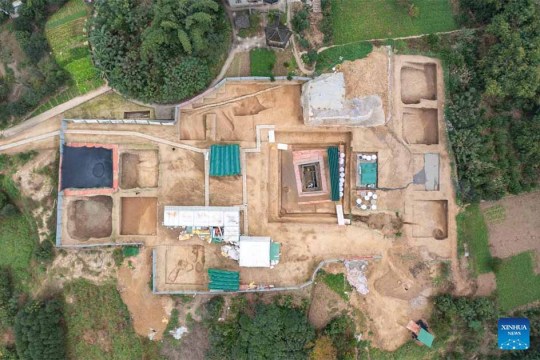
A Rare Western Han Dynasty Tomb Found in Southwest China
A well-preserved tomb, dating back to the Western Han Dynasty (202 BC-25 AD), with a clear recorded year has been discovered in Wulong District of southwest China's Chongqing Municipality, the Chongqing Cultural Relics and Archaeology Research Institute said Tuesday.
This archaeological project is a rescue excavation and protection work carried out to forge cooperation with the Baima project, the last of a cascade of hydropower stations on the section of the Wujiang River in Chongqing.
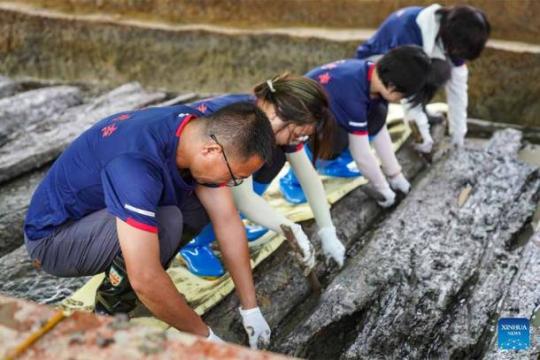

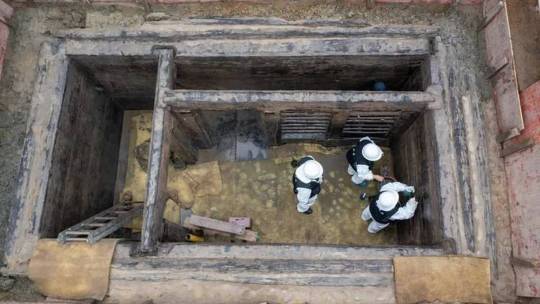



With the approval of the National Cultural Heritage Administration, the Chongqing Cultural Relics and Archaeology Research Institute set up a work team of more than 20 people from different archaeology research institutes and universities to excavate the site in March this year.
According to Huang Wei, the leader of the archaeological project, a collection of tombs dating from the Han Dynasty (202 BC-220 AD) to the Six Dynasties period (222-589) were newly discovered as part of this project. Among them, the tomb dating back to the Western Han Dynasty was the most important, and more than 600 precious cultural relics such as lacquerware, wood ware, bamboo ware, pottery and bronze ware were unearthed from the tomb.

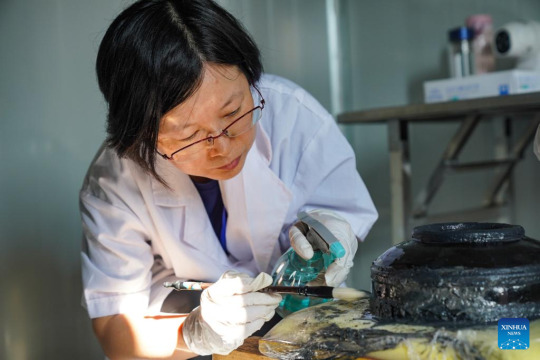
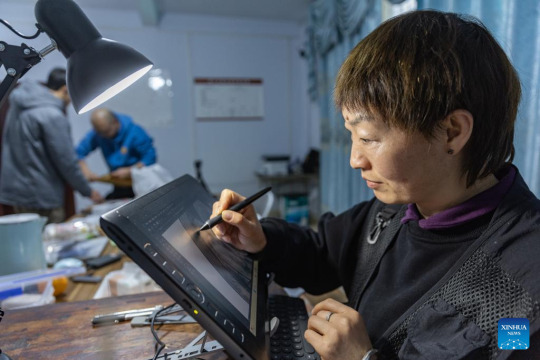
Due to the tomb being filled with water throughout the year, it remains undisturbed and unharmed, and the funerary objects in the tomb are well preserved.
"What is exciting about this discovery is not just the large number of unearthed artifacts but also the list of burial items containing a precise year record, which has been verified as 193 BC, providing clarity on the tomb's burial timeframe. An unearthed jade ware from the tomb shows the prominent position of the tomb owner," Huang said.
The list of burial items found in the tomb is complete and clearly records the name, quantity and size of the funerary objects.
The tomb discovered this time is the one containing the largest quantity of lacquered wood and bamboo wares ever found at one time in the upper reaches of the Yangtze River in China, said Bai Jiujiang, head of the Chongqing Cultural Relics and Archaeology Research Institute.

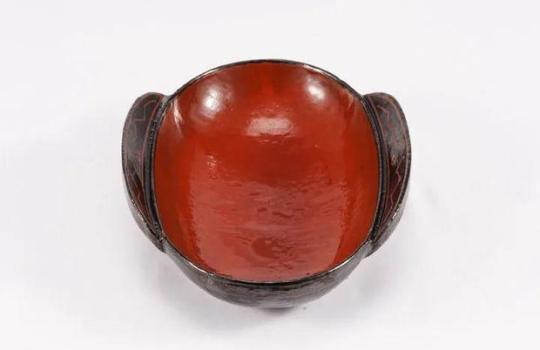

Based on publicly available information, it is also the earliest tomb of the Western Han Dynasty found in China, with a clear recorded year, according to Bai.
This is a major archaeological discovery regarding the Qin and Han Dynasties in the Wujiang River Basin, offering physical evidence and important basic research materials for future study of burial customs and the comparative analysis of famous artifacts from the early Western Han Dynasty, according to the archaeologists.
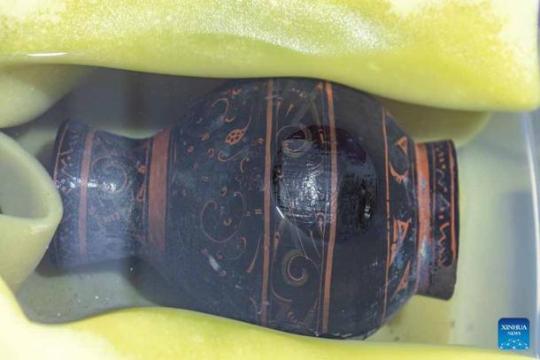

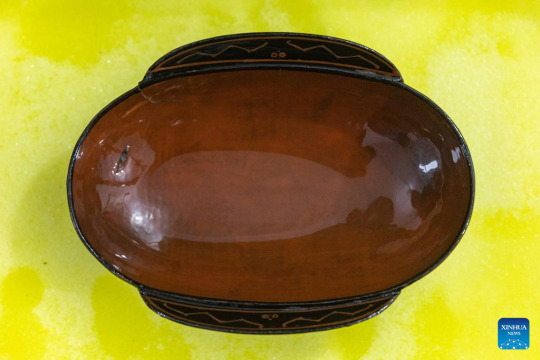

#A Rare Western Han Dynasty Tomb Found in Southwest China#Tomb Holding Hundreds of Ancient Relics Unearthed in China#Western Han Dynasty#ancient tomb#ancient grave#grave goods#ancient artifacts#archeology#archeolgst#history#history news#ancient history#ancient culture#ancient civilizations#ancient china#chinese history#chinese art
62 notes
·
View notes
Text
Top 6 shelved dramas that I would still really like to see
Ranked in no particular order, selection based on my personal tastes.
1) The Prisoner of Beauty
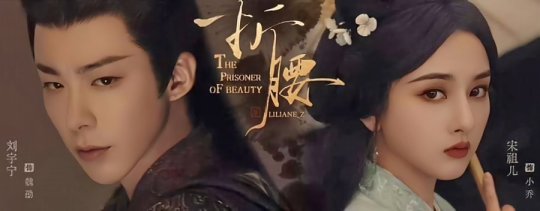
Plot : Adapted from the novel "Zhe Yao" by Peng Lai Ke, it tells the story of the arranged marriage between Wei Shao (Liu Yuning) and Qiao Man (Song Zuer). The fun thing about this marriage is that they both hate each other for complicated family reasons (in the novel Qiao Man's family is directly responsible for the death of Wei Shao's father), so they start they relationship by trying to make the life of the other a living hell. Ultimately, their relationship will develop as they are impressed by each other's ingenuity and discover common interests. There is also an important "let's protect the empire and the common people" plot behind the romance.
Why I wish I could see it : It looks good !! The main duo of actors are both really good looking, but the production in general looks really high budget, with good costumes and sets. I would love to see that. Just look at this trailer !
youtube
Why I am not seeing it any time soon : Song Zuer :/ bestie :/ tax evasion is bad !!
Can we have some hope ? : Not really, at this point of time, no c-actors caught for tax evasion managed to make an actual comeback in the industry (even really popular ones like Deng Lun or Fan Bing Bing). Song Zuer is still being investigated, so maybe we can hope to see her name cleared but it's a little unlikely because they don't investigate people just for fun. However Song Zuer was involved in a lot of high budget projects so I am sure a lot of people are really motivated to try to airdrop at least some of her projects if they have the possibility.
2) The Fated General

Plot : Classic high-budget historical drama telling the story of real life historical figure Huo Qubing (Zhang Ruoyun) during the Western Han Dynasty. It follows his military feats that got him the reputation of being one of the best military generals in the history of China.
Why I wish I could see it : First, the cast is incredible. We have Zhang Ruoyun (famous for being really good at choosing his scripts), Mao Xiao Tong, Bai Yu, Li Hongyi, Xu Yue, and others. It's really an all star cast except the drama was shot in 2016, before some of them became really famous, so it can be really interesting to watch ! Plus it's a really high budget drama, most of the outdoor scenes are shot in real landscape and not in a studio and it globally looks really good. For a better impression, look at this nice looking MV based on the different trailers of the show :
youtube
Why I am not seeing it any time soon : In 2019 (I think ?) the censorship rules changed concerning historical dramas and established the fact that dramas were forbidden to "distort" certain historical facts. This kind of put an end to traditional historical dramas as they became a way more risky investments, and stopped this one from airing as it already took some liberties in terms of storytelling. Huo Qubing is also a semi-controversial historical figure so it is not helping.
Can we have some hope ? : It's been 7 or 8 years and the regulations concerning historical fiction only got more restrictives in China so I would say no.
3) Immortality
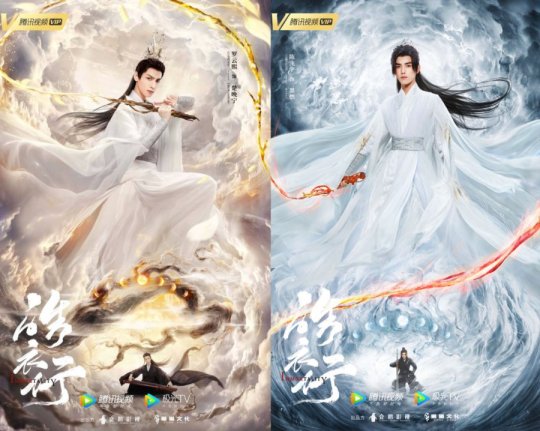
Plot : I'm sure everybody knows the plot of Erha so I don't need to write it but just in case the important tags are : xianxia, dangai, shizunfuckers, reincarnation, blood spitting, stairs, ...
Why I wish I could see it : Outside of the obvious reasons (gay people on my screen, Luo Yunxi spitting blood), it's also produced by the same people involved in the production of Till the End of the Moon and Shui Long Yin, so I have I hopes for the artistic direction of the drama. Also for dmbj fans : did you know Liu Chang played a guest role in this drama ? Idk what he is doing here but I would love to see it.
Why I am not seeing it any time soon : We are all aware of the famous 2021 dangai ban, but in general the chinese government is not a big fan of massive and really agitated fandoms (in the way The Untamed fandom was), so Immortality is in a pretty bad position.
Can we have some hope ? : Yeah !!!!! Hyx TOMORROW !!! Believe in your dreams !!!
For real : Two options. 1) On a random morning of the year 20XX you wake up to danmei fans in your tl losing their marbles bc the 6 first episodes of hyx were randomly airdropped during the night with no promotion and no warnings. You cry some tears of joy and immediately go watch Luo Yunxi spit some blood on screen. 2) After many years hyx is still not out but there were so many leaks that the fans managed to recreate the entire series from scraps and now you can watch it in full. Look, they already started :
youtube
4) Night Wanderer

Plot : Zong Yin (Ni Ni) is a forensic expert living in Shanghai in 2021. She met, in her own apartment, a man, called Sheng Qing Rang (Deng Lun), claiming to be the owner of this apartment but in 1937. Together they discover that they can travel to their respective time periods through their shared apartment and start to develop a strong relationship, first as confidence and progressively as lovers. However, the situation get complicated as the Battle of Shanghai broke out in 1937 putting both of their lives in danger.
Why I wish I could see it : First, for lesbian reasons as I would never miss an occasion to stare at Ni Ni for 36 episodes (Wang Yuwen also has a supporting role here and I really like her ! Double win !). Second, it's actually a really nice and original plot for a CDrama and I have full confidence in both actors' capacity to pull off a really good performance to go with it. Look at this trailer ! It looks so promising !
youtube
Why I am not seeing it any time soon : Deng Lun !!! Tax evasion is bad !!
Can we have some hope ? : Even less than for The Prisoner of Beauty as Deng Lun is 100% proved to have committed tax evasion. There is often rumors about him coming back to acting but it's unlikely.
5) Winner is King

Plot : Based on the novel "Sha Po Lang" by Priest, set in a steampunk version of the Liang Dynasty. It tells the story of Chang Geng (Chen Zhe Yuan), a young man living in a random countryside village, who discovers after a raid on their village that the closest people around him were hiding a big secret about his identity. He also discovers that the people around him are not who they pretend to be, especially his yifu (adoptive father, played by Tan Jianci), and realizes that his life will never be the same.
Why I wish I could see it : Outside of the reasons already mentioned in hyx's case, Winner is King is also directed by the same director as Guardian and a Journey to Love. I really like his work and he proved that he was able to do really good things even with a really low budget, so now imagine with a decent amount of money ? It could be great. Also I really like the idea of an ancient china steampunk but I am too lazy to read the book.
Why I am not seeing it any time soon : Same reason as hyx and all the other dangais </3 Also I am not sure of how advanced the production was when it was stopped, because I feel like there are not as many content leaks.
Can we have some hope ? : If we can manifest hard enough the end of the ban, it is possible.
6) The Love of Hypnosis
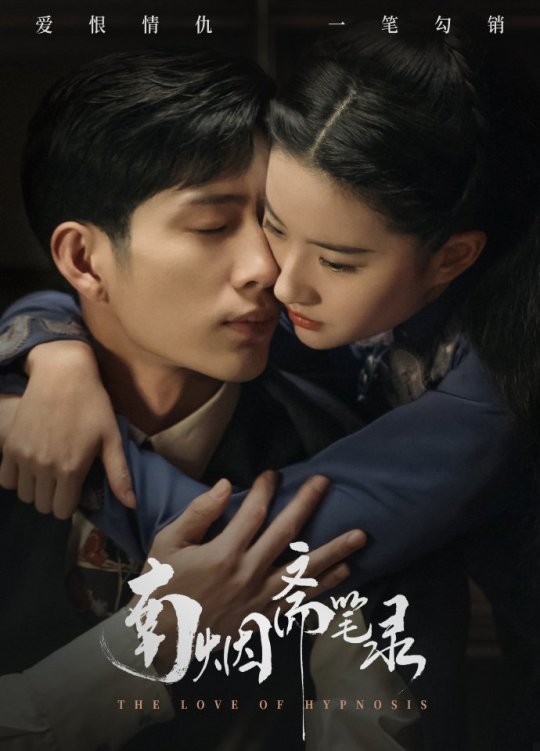
Plot : During the end of Qing Dynasty, a (patriotic) young man named Yen Shen (Jing Boran) meets a fragrance shop owner named Lu Man Sheng (Liu Yifei). Man Sheng has the special ability/ mission to relieve the hearts of people suffering because of love, but it does not mean that her own romantic life is easier to deal with. Together they fall in love and have to navigate the really troubled times of the end of Qing Dynasty.
Why I wish I could see it : If you are familiar with Liu Yifei and Jing Boran acting I'm sure you can see the potential of this pairing ??? Just the poster has more on screen chemistry than some pairings have in 40 episodes. At this point the plot could be written by a cat walking on a keyboard and I would still have hope for a good chemistry. Also the drama has Liu Mintao in a supporting role and I am in love with her so it's a plus.
Why I am not seeing it any time soon : First, there are some copyright issues with the original manhwa author. Second, the second male lead, Zhao Lixin, got more or less canceled a few years back for political reasons (sorry I don't have the details).
Can we have some hope ? : I would say maybe a little. Copyright issues can be solved and I've heard that Zhao Lixin is still shooting in dramas, meaning that there is hope for some of his stuff still being released.
That's all <3
Sorry for depressing information maybe ? Next time I promise I will make a post about dramas I am looking forward to and that are likely to be released sooner or later.
#cdrama#the prisoner of beauty#the fated general#immortality#hao yi xing#night wanderer#winner is king#the love of hypnosis#hitting my head against the wall
33 notes
·
View notes
Text
Meaning of 陈情 Chenqing
This is going to be a rehash of the old Taming Wangxian footnotes, but I’ll be adding a little more.
The term 陈情 Chenqing has two meanings. The first would be to reminisce past relationship (former friendship), and the second would be to provide a full account of (an issue).

To gain further context about this term, let us look at where it originated from. It was first originated from Wenxuan (‘Selections of Refined Literature”) compiled by 萧统 Xiao Tong, the Crown Prince of the Liang Dynasty. In the Wenxuan, there is a segment called the 陈情表 Chenqing Memorial (to the throne), which is a letter written by Li Mi, a scholar of the Western Jin Dynasty to the Emperor Wu of Jin. The Emperor Wu of Jin had employed him to work in the palace stables but Li Mi wanted to take care of his elderly grandmother. His father died, his mother remarried and he lived with his grandmother. So he wrote this heartfelt letter about his family circumstances and the hardship that he’s facing. (It’s basically a resignation letter lol). The story didn’t end well and he was removed from his post, defamed and he died at home.
This term is also used in the modern context of confessing before a court. Hence, a 陈情 Chenqing is almost like a plea of sorts. It fits so well as firstly, Wei Wuxian is essentially treated like a criminal throughout the entire book and everyone in the series expects a “confession” from him. The confrontation at Nightless City was almost like a court that wanted to trial him. And secondly, from the historical context of the word, it could have hinted that it wouldn’t make a different no matter what he said and he wouldn’t have ended well.
陈情 and 随便 are commonly thought to depict the shift in Wei Wuxian’s character. 随便 (suí biàn) represents his youth; he is carefree, relaxed and without worry. 陈情 on the other hand, is a depiction of his loss and loneliness. Chenqing was created from his time in the Burial Mounds - it’s a turning point for him because at this juncture, he had no means to give his own account or prove his “innocence”, simply because he has walked the demonic path. He’s unable to tell his loved ones that he lost his jindan, and as much as he misses his past relationships, he’s unable to relive them because he’s labelled a “demonic” Yiling Laozu.
An interesting titbit can be found in the title of the Untamed, 陈情令 (chén qíng lìng). There are two possible interpretations to this.
(i) The main focus of the story is on Wei Wuxian and his character growth, hence placing 陈情 in the title puts the emphasis on him.
(ii) 陈情一曲令天下 (chén qíng yī qū lìng tiān xià) - According to a forum, the producers have used this line to describe the drama’s title. It can be translated to, “a song from Chenqing commands the world”, aptly depicting Chenqing’s power.
338 notes
·
View notes
Note
Hello!
"No honestly, they act like the only way to be able to engage with Chinese works is to comprehend it only by what western story arcs and thematics are! Like what the hell, it is audaciously xenophobic and racist to deny that these works do and can be on a separate sphere of what philosophy is in other cultures. And it's just demeaning especially with how forceful they are when they post things that say anything about "being sinful" when Buddhism doesn't even have a concept close to sin! Even what are considered crimes and a rejection of dharma is the concept of a rejection of refusing the natural law of the universe which in itself is not at all comparable to the idea of the guilt usually meant to be associated with sin."
I agreed with this.
So I want to ask, do you know where can I find more about types of Chinese story arcs and thematics in various genres?(not only wuxia/xianxia)
The sin comparisons are ODD. How to explain that WWX's YLLZ actions don't really contradict him being a moral ideal?(everyone says they do...)
I also read some comments about how WWX's story arc felt unsatisfying. For me it was perfectly satisfying,but I don't know how to explain WHY.
Hello anon.
So I want to ask, do you know where can I find more about types of Chinese story arcs and thematics in various genres?(not only wuxia/xianxia)
Mmmm, depends on what sort you may want, for outside of Wuxia/Xianxia that are translated main stream to English or English Diaspora I would recommend the following:
THE WEDDING PARTY BY LIU XINWU: Auntie Xue’s son, Jiyue, is getting married in December of 1982 after the Bei Jing Revolution. Takes place in several different points of view from the groom, bride, chef and party attendants.
TO LIVE BY YU HUA: The spoiled son of a landlord, Xu Fugui, squanders his family’s entire fortune. Xu Fugui lives throughout the years spanning the revolutionary changes and japanese-sino wars of 1930s-1960's.
HERO BORN BY JIN YONG: The very first book out of 12 for Legend of the Condors and from one of the most well known wuxia writers from when the genre took off in the 1950's
I LIVE IN THE SLUMS BY CAN XUE: Collection of short stories from different character perspectives about urban life that approaches chinese life and tradition from what is considered radical than the norm
THE RADIANT EMPEROR DUALOGY BY SHELLEY PARK-CHAN: Historical fantasy of 14th century China, the mandate of heaven is a literal flame granted to the next emperor. Two children, Zhu Chongba and Ouyang become embroiled within the political backdrop of the Ming dynasty and touches on heavy themes of gender identity and sexuality.
As for the idea Wei Wuxian's story arc was unsatisfying, don't know what to say, most xianxia and wuxia protagonists/heroes do get their happy ends unless it is meant to be tragic, but these usually as a genre are not meant to be tragic endings for the leads. It's kind of like expecting Lord of The Rings to be tragic in end for Frodo who was left to his own peace by leaving Middle Earth. Sometimes you'll be personally unhappy with a arc end. This does not mean execution of storytelling was lacking or weak on author part. If it cleanly and thematically reflects that end, it's a personal problem unfortunately and not a work or genre for you perhaps.
These are not written with the concept of sin or the traditional idea of redemption exposed to within western texts. Doaist Buddhism is not on the same philosophical standing as Christian redemption or tellings. Samsara are able to be a complete new start, Sin does not follow in after life or new life within samsara cycles, the point is that you can always remove the self from the suffering of human vice and obsession to ascend above what humanity is.
25 notes
·
View notes
Text
Since many people enjoyed the Peach Blossom Springs build by Epicwork, here are some more builds that they’ve made over the years, along with some historical background on the builds, if anyone is interested:
The Thousand-Year Capital City - Luoyang (千年帝都·洛阳)
undefined
youtube
In ancient times, Luoyang served as capital city in Xia dynasty/夏朝 (2070 BC - 1600 BC; the existence of this dynasty is debated among scholars due to insufficient archaeological evidence), Shang dynasty/商朝 (1600 BC - 1046 BC; Luoyang was one of the two capital cities), Western Zhou dynasty/西周 (1046 BC - 771 BC; Luoyand was again one of two capital cities), Eastern Zhou dynasty/东周 (770 BC - 256 BC), Western Han dynasty/西汉 (briefly starting from 202 BC), Eastern Han dynasty/东汉 (25 AD - 220 AD), Kingdom (dynasty if going by the traditional official historiography) of Wei/曹魏 (220 AD - 266 AD; this is part of the famous Three Kingdoms period), Western Jin dyansty/西晋 (266 AD - 213 AD), Northern Wei dynasty/北魏 (386 AD - 534 AD; Luoyang became its capital in 494 AD), Sui dynasty/隋朝 (581 AD - 618 AD; Luoyang became the capital in 605 AD), Tang dynasty/唐朝 (618 AD - 907 AD, including the brief Zhou/武周 during which Wu Zetian was the first female emperor; Luoyang was the capital or one of the capitals starting from 657 AD), Later Liang dynasty/后梁 (907 AD - 923 AD), Later Tang dynasty/后唐 (923 AD - 937 AD), Later Jin dynasty/后晋 (936 AD - 947 AD).
The build here (minus the giant dragon statue of course) is based on Luoyang during Tang dynasty, possibly around the time when Emperor Gaozong or Wu Zetian was in power, due to the presence of the enormous standing Buddha statue (Wu Zetian believed in Buddhism, while most other emperors of Tang dynasty put more emphasis on Daoism, since they claimed to be descendants of the founder of Daoism, Laozi, whose real name was Li Er).
The Garden of Gardens - The Old Summer Palace (万园之园·圆明园)
undefined
youtube
The Old Summer Palace or Yuanmingyuan/圆明园 was a garden constructed during Qing dynasty that incorporated elements of Chinese architecture and Western architecture. The garden used to contain many priceless artifacts, the vast majority of which were stolen by British and French forces in 1860, and the garden itself was burned to the ground and thoroughly destroyed. As a result of this purposeful destruction, only a few broken pillars remained, standing as a grim reminder to the plundering and destruction that were the results of Western imperialism.

Epicwork tried to reference old photos and historical records when recreating the garden here in this build.
The quote at the beginning of the video comes from a letter written by Victor Hugo to Captain Butler (boldened portion is the quote):
To Captain Butler
Hauteville House,
25 November, 1861
You ask my opinion, Sir, about the China expedition. You consider this expedition to be honourable and glorious, and you have the kindness to attach some consideration to my feelings; according to you, the China expedition, carried out jointly under the flags of Queen Victoria and the Emperor Napoleon, is a glory to be shared between France and England, and you wish to know how much approval I feel I can give to this English and French victory.
Since you wish to know my opinion, here it is:
There was, in a corner of the world, a wonder of the world; this wonder was called the Summer Palace. Art has two principles, the Idea, which produces European art, and the Chimera, which produces oriental art. The Summer Palace was to chimerical art what the Parthenon is to ideal art. All that can be begotten of the imagination of an almost extra-human people was there. It was not a single, unique work like the Parthenon. It was a kind of enormous model of the chimera, if the chimera can have a model. Imagine some inexpressible construction, something like a lunar building, and you will have the Summer Palace. Build a dream with marble, jade, bronze and porcelain, frame it with cedar wood, cover it with precious stones, drape it with silk, make it here a sanctuary, there a harem, elsewhere a citadel, put gods there, and monsters, varnish it, enamel it, gild it, paint it, have architects who are poets build the thousand and one dreams of the thousand and one nights, add gardens, basins, gushing water and foam, swans, ibis, peacocks, suppose in a word a sort of dazzling cavern of human fantasy with the face of a temple and palace, such was this building. The slow work of generations had been necessary to create it. This edifice, as enormous as a city, had been built by the centuries, for whom? For the peoples. For the work of time belongs to man. Artists, poets and philosophers knew the Summer Palace; Voltaire talks of it. People spoke of the Parthenon in Greece, the pyramids in Egypt, the Coliseum in Rome, Notre-Dame in Paris, the Summer Palace in the Orient. If people did not see it they imagined it. It was a kind of tremendous unknown masterpiece, glimpsed from the distance in a kind of twilight, like a silhouette of the civilization of Asia on the horizon of the civilization of Europe.
This wonder has disappeared.
One day two bandits entered the Summer Palace. One plundered, the other burned. Victory can be a thieving woman, or so it seems. The devastation of the Summer Palace was accomplished by the two victors acting jointly. Mixed up in all this is the name of Elgin, which inevitably calls to mind the Parthenon. What was done to the Parthenon was done to the Summer Palace, more thoroughly and better, so that nothing of it should be left. All the treasures of all our cathedrals put together could not equal this formidable and splendid museum of the Orient. It contained not only masterpieces of art, but masses of jewelry. What a great exploit, what a windfall! One of the two victors filled his pockets; when the other saw this he filled his coffers. And back they came to Europe, arm in arm, laughing away. Such is the story of the two bandits.
We Europeans are the civilized ones, and for us the Chinese are the barbarians. This is what civilization has done to barbarism.
Before history, one of the two bandits will be called France; the other will be called England. But I protest, and I thank you for giving me the opportunity! the crimes of those who lead are not the fault of those who are led; Governments are sometimes bandits, peoples never.
The French empire has pocketed half of this victory, and today with a kind of proprietorial naivety it displays the splendid bric-a-brac of the Summer Palace. I hope that a day will come when France, delivered and cleansed, will return this booty to despoiled China.
Meanwhile, there is a theft and two thieves.
I take note.
This, Sir, is how much approval I give to the China expedition.
Regrettably, none of the priceless artifacts that were stolen had been returned by any of the countries involved, and instead became a major part of the museum collections of various Western countries. The small portion of artifacts that had returned to China were mostly bought from auctions by Chinese people. To this day, British and French mainstream media refuse to fully acknowledge the plundering and destruction of Yuanmingyuan.
Lijiang, the Ancient Mystic City (中国风·丽江古镇)
undefined
youtube
I thought the translation for the title should’ve been “the Ancient Mystical City”, but it’s okay. This is Epicwork’s first Chinese architecture-style build that became popular. This build is based on the real life Old Town of Lijiang (丽江古镇), which is a UNESCO World Heritage Site. The real life Old Town of Lijiang has architecture that incorporated features of Han culture and Naxi culture.

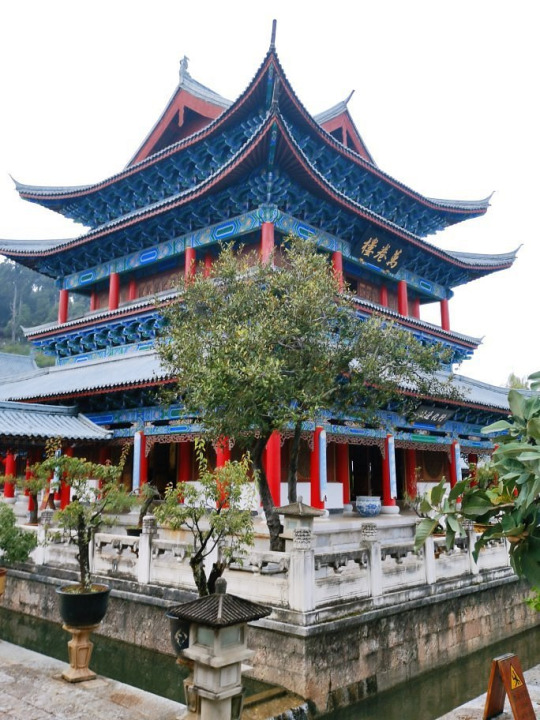
Finally, a build that doesn’t really fit the topic of this blog, but personally I really liked it, and just in time for October...
Devil Island (恶魔岛)
undefined
youtube
The cathedral in this build is based on Duomo di Milano.
#epicwork china#minecraft builds#the thousand year capital city Luoyang#the garden of gardens The Old Summer Palace#the ancient mystic city Lijiang#devil island#luoyang#the old summer palace#lijiang#old town of lijiang#chinese architecture#gothic architecture#chinese history#chinese culture#minecraft#yuanmingyuan#Youtube
157 notes
·
View notes
Note
So, my understanding is that FengShen Yanyi is before Journey to que west. My question is, are the events of Lotus Lantern before Sun Wukong wants a place in heaven? I know those three stories the most, but I don't know if there are any others that I should know. I also wanted to ask where Chang'e's story falls between these stories.
Shang Dynasty: c.1750 B.C. - c.1066 B.C.
The Investiture of the Gods, also known by its Chinese names Fengshen Yanyi (Chinese: 封神演義) story is set in the era of the decline of the Shang dynasty (1600–1046 BC) and the rise of the Zhou dynasty (1046–256 BC).
Zhou Dynasty: Western Zhou: 1066 B.C. - 221 B.C.
Chang'e first appeared in Guicang, a divination text written in Zhou Dynasty (1046 BC - 256 BC).
Qin Dynasty: 771 B.C. - 206 B.C.
Wukong bursting out of the stone (Warring States Period)
Han Dynasty: 206 B.C. - 220
Wukong Dies (at the age of 342)
Wukong Trapped Under Five Element Mountain
Liu Xiang (Liu Chenxiang's father), a scholar of the Han Dynasty (first draft)
Three Kingdoms: Wei: 220 - 280
Western Jin: 265 - 316
Eastern Jin: 317 - 420
Sixteen Kingdoms: 304 - 420
Southern and Northern Dynasty: 420 - 581
Sui Dynasty: 581 - 618
Tang Dynasty: 618 - 907
Journey to the West (Chinese: 西遊記) is an extended account of the legendary pilgrimage of the Tang dynasty Buddhist monk Xuanzang
The Magic Lotus Lantern is a Chinese fairy tale from the Tang dynasty (618–907). (recreation in Qing Dynasty)
Five Dynasties: 907 - 979
Song Dynasty: 960 - 1279
Liao Dynasty: 907 - 1125
Western Xia Dynasty: 1032 - 1227
Jin Dynasty: 1115 - 1234
Yuan Dynasty: 1279 - 1368
Ming Dynasty: 1368 - 1644
Qing Dynasty: 1644 - 1911
I'm taking this from when the legends are either first mentioned OR have said IN THE TEXT when they are to take place. Chang'e was first mentioned in the Zhou Dynasty, but I am not sure if the story is meant to be even earlier depending. I have also seen that the story of Chang'e first appeared in the Shang Dynasty hexagram "Gui Zang ". The complete story of Chang'e flying to the moon was first recorded in "Huainanzi·Lanmingxun" of the Western Han Dynasty. During the Eastern Han Dynasty, the relationship between Chang'e and Yi was established, and Chang'e turned into a toad that made medicine after entering the moon palace. After the Northern and Southern Dynasties, the image of Chang'e returned to being a woman. In Han Dynasty portraits, Chang'e has the head of a human and the body of a snake. Her hair is in a high bun, she wears a long jacket with wide sleeves, and her long tail is decorated with short, barb-shaped feathers. After the Northern and Southern Dynasties, Chang'e was portrayed as a peerless beauty.
Xiyouji is also very much in the Tang dynasty and is even said to have prolonged the Tang dynasty within the novel. Wukong’s birth and creation is to be sometime in the Warring States period and to be guessed in the Qin Dynasty. Lotus Lantern ALSO was created in the Tang Dynasty and from my understanding and its first interaction is when Liu Xiang (someone said Liu Xi) is a scholar of the Han Dynasty and went to Beijing to take an exam (this is the version of lotus Lanter were he gets remarried) He passed by the Huashan Temple and wrote a poem in the temple. He teased the temple deity, the Sanseng Mu of Huayue. Sanseng Mu was so angry that they wanted to kill him but fell in love with him in the end. I cannot say that if the original version is meant to be before or after the Wukong has been punished by heaven and is under the mountain but considering that Wukong mentions Erlang's mother and not his nephew that would be a good suggestion that is after in this version. It is in the Qin Dynasty do we see the version that Lotus Lantern being definitively placed after Wukong going on his journey in Tang Dynasty, making the legends VERY recent in comparison to others. This is the version where Chengxiang's father doesn't get remarried and is the more popular of the two honestly.
#anon ask#anonymous#anon#ask#jttw#journey to the west#sun wukong#xiyouji#lotus lantern#chang’e#erlang shen#Jian Yang#sorry if this is a mess#which is is#but like#legends go through a lot of revisions#i would rec NOT trying to pinpoint timelines in chinese mythos#it is just a headache but I shall try to offer you options#Like when the legends start and like when the mythos really became what we know about them now#These things are OLD people#things CHANGE
12 notes
·
View notes
Text
i miss him (western han dynasty general wei qing)
45 notes
·
View notes
Photo

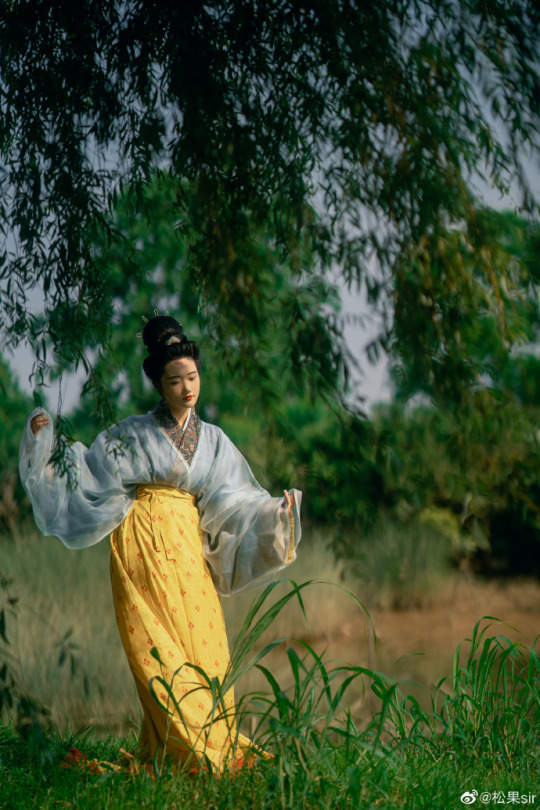
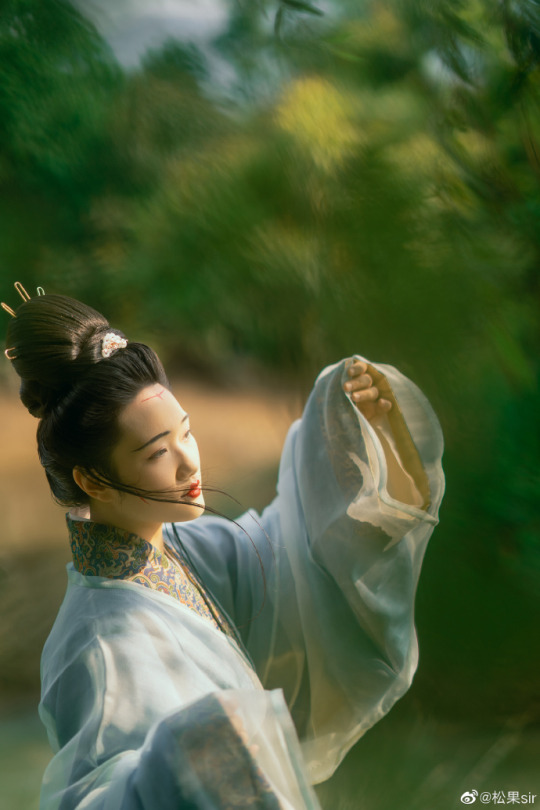
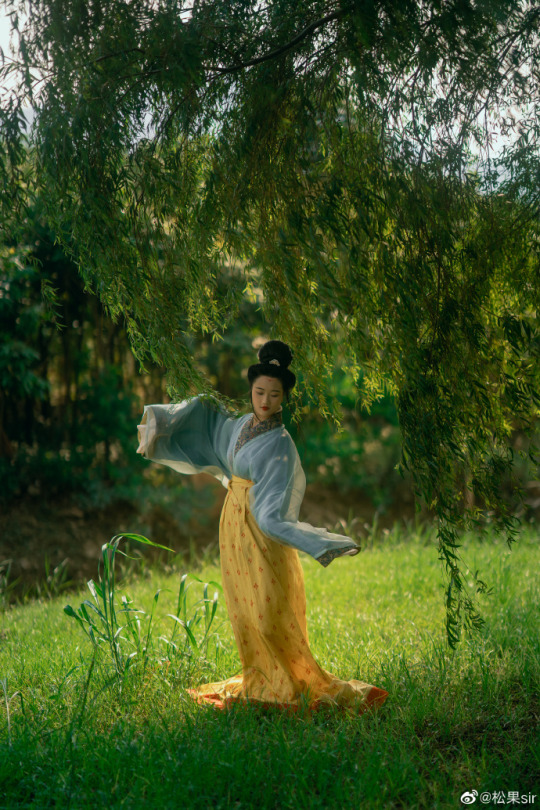

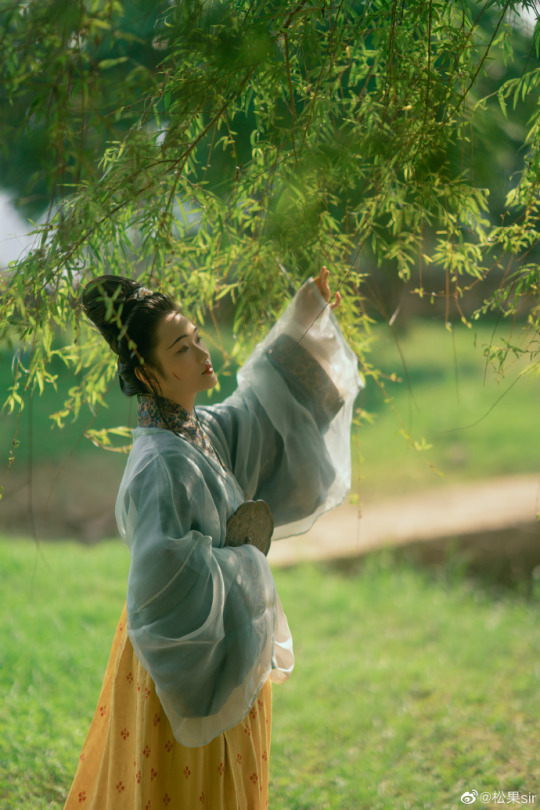
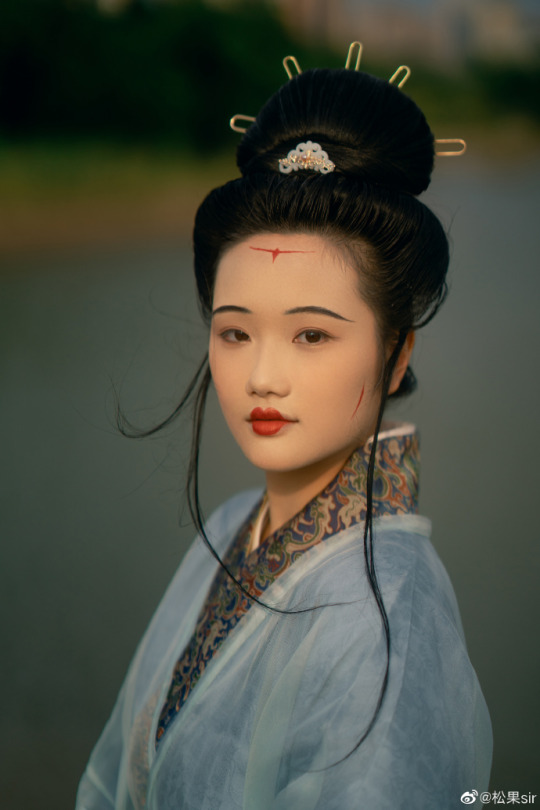

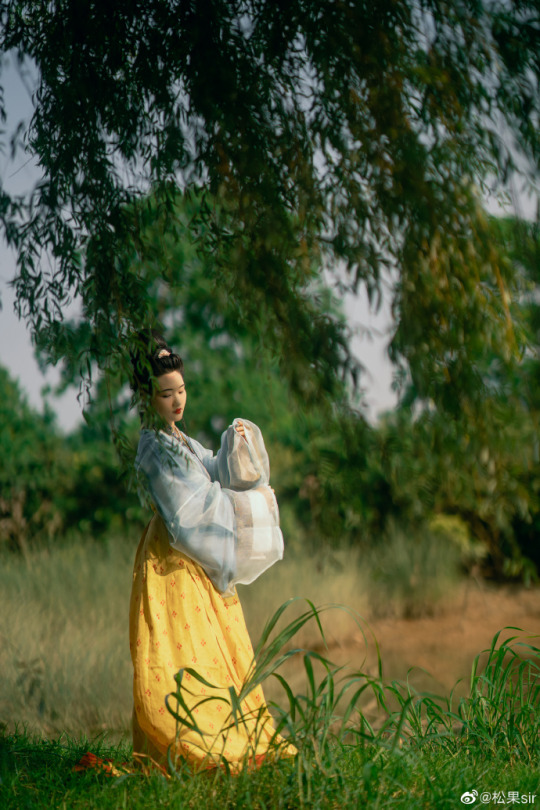
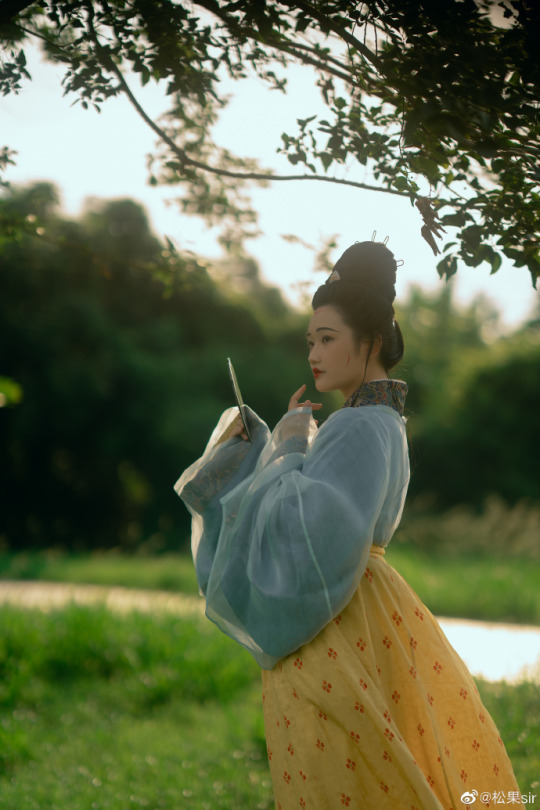

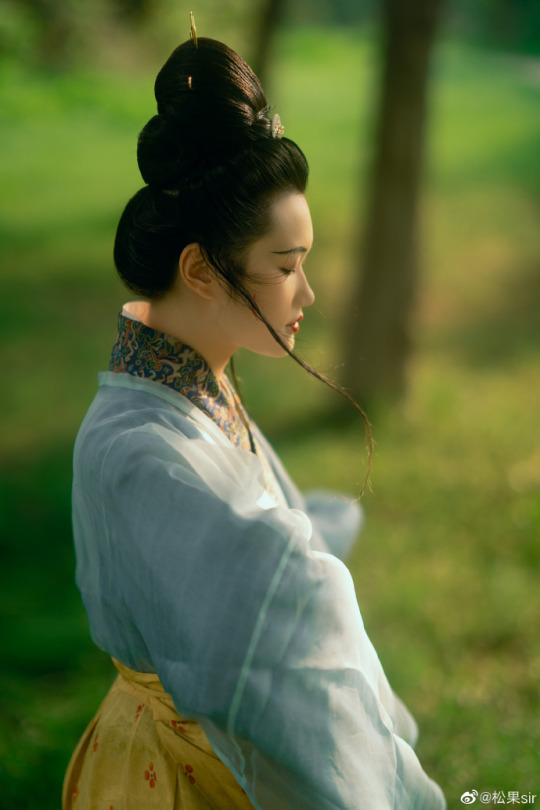


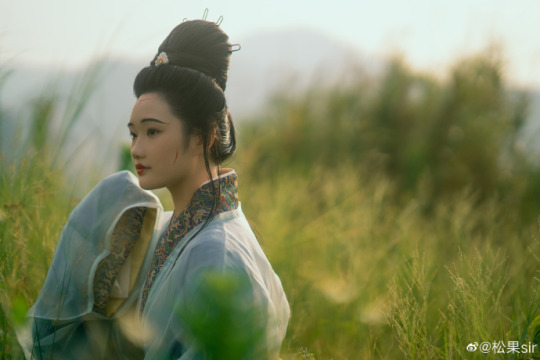
【Han Dynasty Historical Reference Artifacts】:
As early as the late Western Han Dynasty(206 BCE-25S CE), the High hair bun became popular, and it was no longer limited to the low hairstyle like early Western Han Dynasty (put the hair down and tied behind the back). Moreover, high hair bun it has been popular until the Eastern Han Dynasty(25–220) and Wei & Jin Dynasty.
According to the "Ballad in the City《城中谣》" of the Han Dynasty:
城中好高髻,四方高一尺。
城中好广眉,四方且半额。
城中好大袖,四方全匹帛。
【Translate】
High buns are popular in the city, and people all over the world have buns that are one foot taller.
Wide eyebrow are popular in the city, and people in the world draw(eyebrow) half their foreheads.
Big sleeves are popular in the city, and people all over the world use whole pieces of cloth to make them.
※" Ballad in the City 《城中谣》" is a folk song in "Yuefu Poetry Collection Miscellaneous Songs and Ballads《乐府诗集·杂歌谣辞》". On the surface, it talks about the fashion and its variation in the Han Dynasty, but actually satirizes the social atmosphere of blindly following the trend at that time.
---------
In addition, There were also changes in the way of dressing in the Western Han Dynasty and Eastern Han Dynasty Period.
Left:Murals of the Eastern Han Dynasty from Dahuting Han tombs
Right: female pottery figurines of the Western Han Dynasty (presumably early Western Han Dynasty)
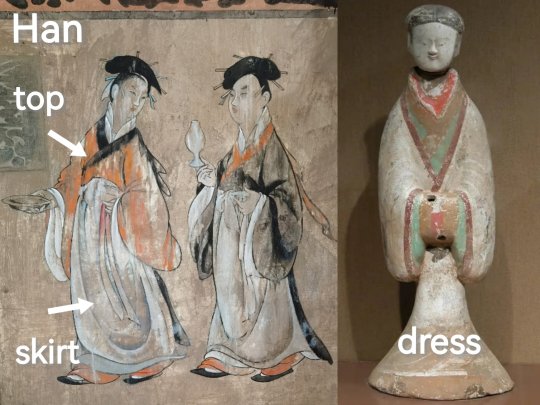
------------
Western Han Dynasty Mural Tomb unearthed from Xi'an University of Technology↓


Western Han Dynasty Mural,Unearthed from Cuizhuyuan Tomb No lin Qujiang New District of Xi'an, Shaanxi, in 2008
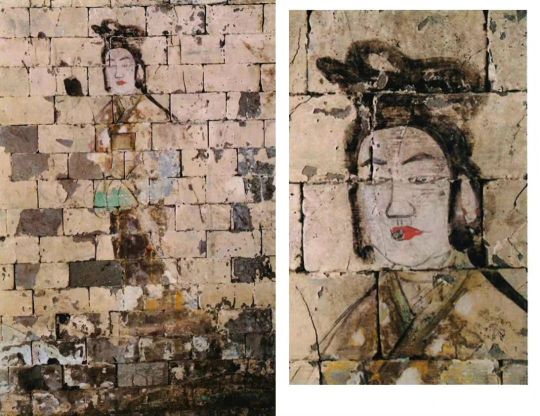
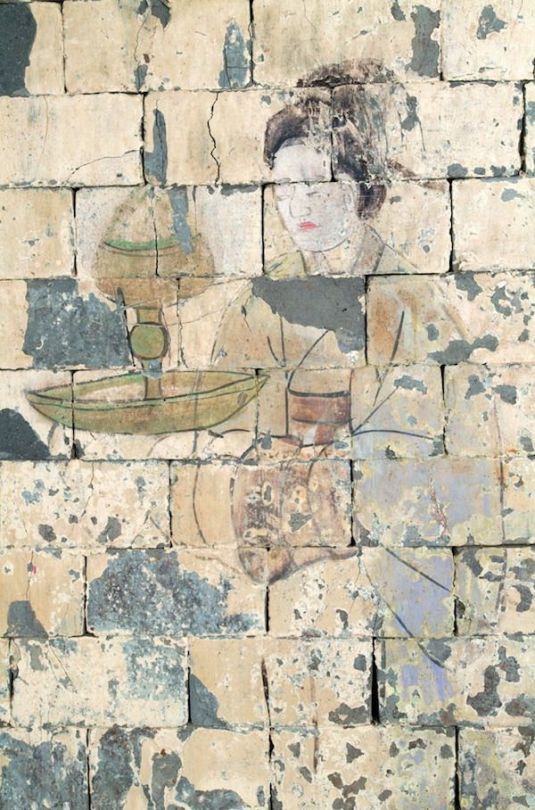
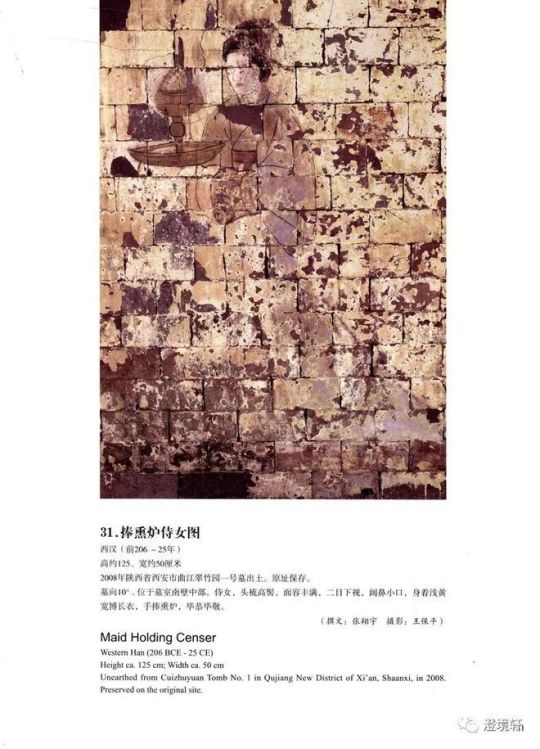
Western Han Dynasty Murals, Luoyang Museum Collection
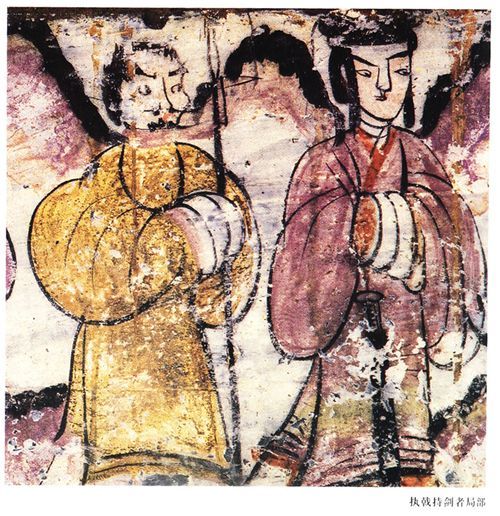
Eastern Han Dynasty Mural in Lujiazhuang, Anping County/安平县逯家庄东汉壁画墓
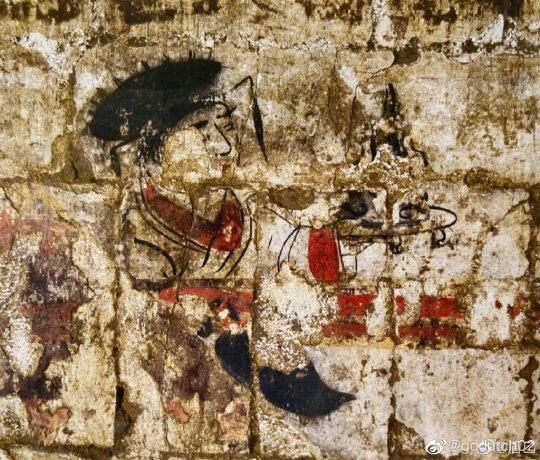
[Hanfu · 漢服]Chinese Eastern Han Dynasty (25–220 A.D.) Traditional Clothing Hanfu Photoshoot
_______
📸Photo:@松果sir
👗Hanfu:@桑纈
📍Filming Location: Minhou, Fuzhou,China
🔗Weibo:https://weibo.com/3250619702/N4GoJiBmz
_______
#chinese hanfu#Eastern Han Dynasty (25–220 A.D.)#western han dynasty#chinese history#chinese traditional clothing#hanfu history#chinese archeology#chinese#chinese historical fashion#hanfu#hanfu photoshoot#China History#hanfu accessories#hanfu artifacts#��服#汉服#松���sir#桑纈
176 notes
·
View notes
Text
Wang Chuan Feng Hua Lu (忘川风华录) Masterpost

Wang Chuan Feng Hua Lu (忘川风华录) is a Vocal synth (Vocaloid and SynthV) music project. It consists of songs themed around different figures throughout Chinese history. The project is a collaboration between different artists and creatives, with music and videos featuring prominent traditional Chinese elements. The project's title translates to "The Records of Magnificence of the Wangchuan" - In Chinese mythology, "Wangchuan" (or River of Forgetting) is a river in the Underworld that can rid one of their past life's memories, similar to the river Lethe.
A mobile game adaptation has also been developed by NetEast. Unfortunately, I haven't played it so I can't give much insight on it. However, I assume that its premise is similar to that of the idea behind the project as a whole: all these historical figures meeting each other in the Underworld after they died. Maybe.
You can find all the songs on Bilibili. The official Weibo can be found here. The game's website, which includes all characters appearing so far in the game, can be found here, and its Weibo can be found here.
(If you prefer YouTube, I've also put together a handy playlist. Please know that most of these videos are reposts though, so please watch the original Bilibili MVs if you can!)
This blog is where I will be posting everything I feel like I need to say about the songs in this project. A lot of it is lifted from my Twitter account but will be in much more detail. Note that I probably won't touch collab songs, or songs that don't focus solely on the project's own characters.
Disclaimer: I do not speak Chinese, nor am I an expert on Chinese history. Therefore, I cannot reliably translate the lyrics to these songs, nor my words should be taken as gospel. I am merely a nerd gushing about my hyperfixation.
Playlist
多情岸 【Duo Qing An】 ➼ B link
洛阳怀 【Luo Yang Huai】 ➼ B link
易水诀 【Yi Shui Jue】 ➼ B link
山河令 【Shan He Ling】 ➼ B link
簪花人间 【Zhan Hua Ren Jian】 ➼ B link
栖凰 【Qi Huang】 ➼ B link
心上秋 【Xin Shang Qiu】 ➼ B link
祖龙吟 【Zu Long Yin】 ➼ B link
如见青山 【Ru Jian Qing Shan】 ➼ B link
竹林间 【Zhu Lin Jian】 ➼ B link
天下局 【Tian Xia Ju】 ➼ B link
青鸟衔风 【Qing Niao Xian Feng】 ➼ B link
木兰行 【Mu Lan Xing】 ➼ B link
好字唯之 【Hao Zi Wei Zhi】 ➼ B link
不可道 【Bu Ke Dao】 ➼ B link
水叙湖风 【Shui Xu Hu Feng】 (collab) ➼ B link
是非 【Shi Fei】 ➼ B link
风起甘露 【Feng Qi Gan Lu】 (collab) ➼ B link
谓剑 【Wei Jian】 ➼ B link
万象霜天 【Wan Xiang Shuang Tian】 (New Year event song) ➼ B link
千秋梦 【Qian Qiu Meng】 ➼ B link
易安难安 【Yi An Nan An】 ➼ B link
惊鹊 【Jing Que】 ➼ B link
高歌破阵 【Gao Ge Po Zhen】 (collab) ➼ B link
不赴 【Bu Fu】 ➼ B link
西行 【Xi Xing】 ➼ B link
大航海家 【Da Hang Hai Jia】 ➼ B link
牡丹乱 【Mu Dan Luan】 (collab) ➼ B link
倾国 【Qing Guo】 (collab) ➼ B link
相虎 【Xiang Hu】 ➼ B link
补天裂 【Bu Tian Lie】 ➼ B link
此期盈期 【Ci Qi Ying Qi】 (1st anniversary song) ➼ B link
破云来 【Po Yun Lai】 ➼ B link
归钓吟 【Gui Diao Yin】 ➼ B link
始见千秋 【Shi Jian Qian Qiu】 ➼ B link
临川浮梦 【Lin Chuan Fu Meng】 ➼ B link
将军行 【Jiang Jun Xing】 ➼ B link
妄语人间 【Wang Yu Ren Jian】 ➼ B link
数风流 【Shu Feng Liu】 (2nd anniversary song) ➼ B link
问剑春秋 【Wen Jian Chun Qiu】 ➼ B link
起战令 【Qi Zhan Ling】 ➼ B link
人间应又雪 【Ren Jian Ying You Xue】 ➼ B link
旷古回响 【Kuang Gu Hui Xiang】 ➼ B link
墨隐侠声 【Mo Yin Xia Sheng】 ➼ B link
桃源故人 【Tao Yuan Gu Ren】 (3rd anniversary song) ➼ B link
*Note: The anniversary songs are probably for the game's anniversaries, as the project itself is more than 5 years old.
Albums
Vol 1: 溯洄 【Su Hui】
Includes character songs from Duo Qing An to Zhu Lin Jian. Features human vocals.
Vol 2: 踏浪 【Ta Lang】
Includes character songs from Tian Xia Ju to Jing Que.
Vol 3: 数风流 【Shu Feng Liu】
Includes character songs from Bu Fu to Wang Yu Ren Jian, an unreleased song titled 燕双归 【Yan Shuang Gui】, and the two anniversary songs.
Visual character guide:
PRE-QIN | QIN | WESTERN CHU | HAN | THREE KINGDOMS | JIN | NORTH & SOUTHERN DYNASTIES | TANG | FIVE DYNASTIES & TEN KINGDOMS | SONG | YUAN | MING | QING | DREAM
#忘川风华录#wang chuan feng hua lu#wcfhl#chinese music#vocasynth#vocaloid#synthv#vocaloid project#synth v project#synthesizer v#vocal synths#long post#this is the culmination of a 3 year brainrot#i will try my best
7 notes
·
View notes
Text
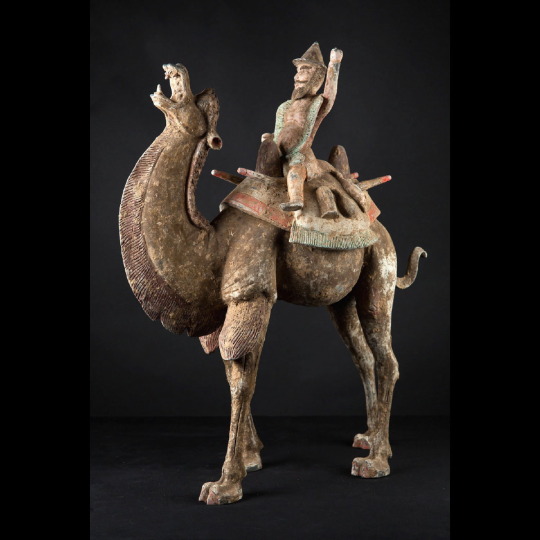



Sogdian merchant on camel 618-906 CE. Height: 73 cm (28.7’’) - Length: 59 cm (23.2’’).
"As the Han dynasty slowly collapsed, management at the frontier began to be neglected. Afterwards, in the Three Kingdoms period, foreigners who wanted to enter China had to go through immigration control by the Wei (魏) country. In particular, 'Dunhuang', located on the westernmost frontier of Wei, was crowded with foreign merchants trying to enter China. This is because Dunhuang served as a kind of entry gate as the center and key point of the western frontier. At that time, the people who came and went the most were these Sogdians of Iranian descent."
-Moon Jae-up (묻재업) on ilbe
#sogdiana#statue#ancient history#history#art#ancient art#chinese history#iranian#indo european#camels#sculpture
25 notes
·
View notes